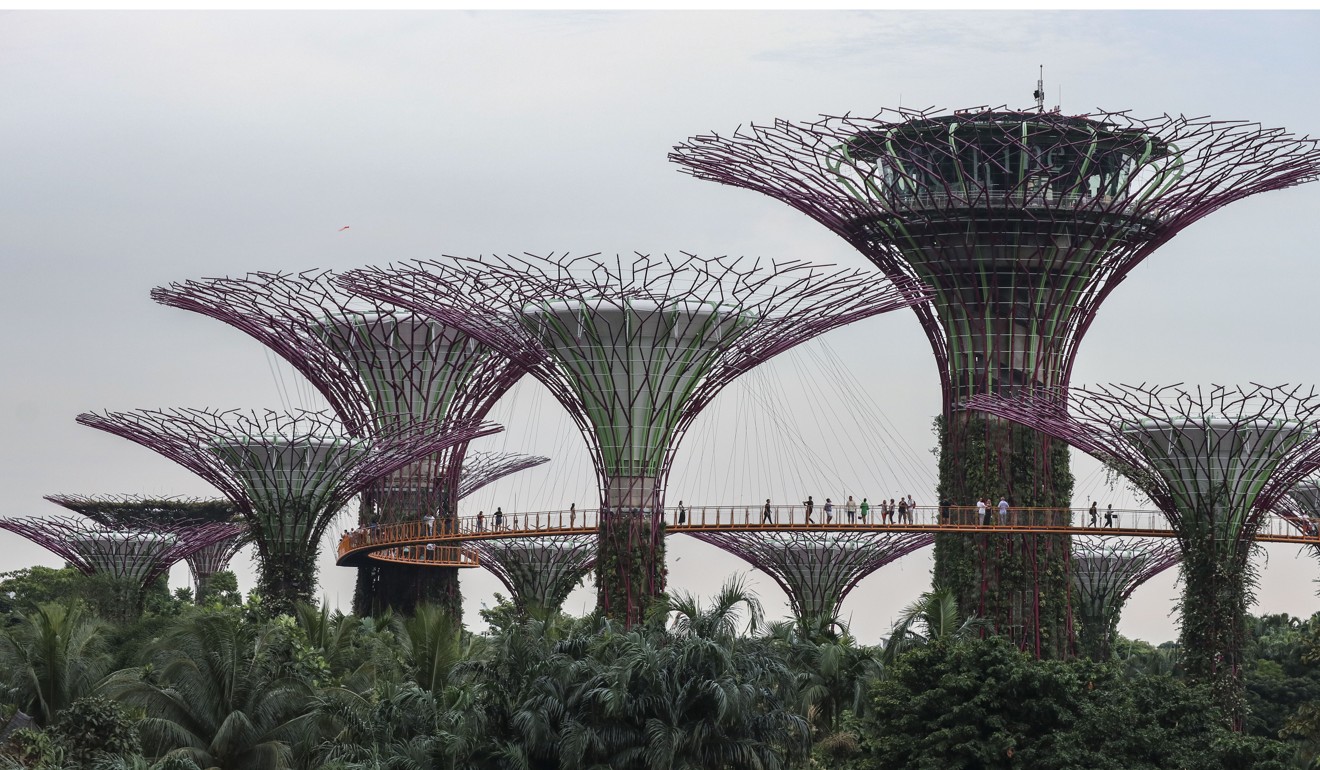
Singapore goes big on solar power to fight climate change
- Besides putting solar panels on buildings, Singapore plans to double the capacity of floating solar modules in its water reservoirs
- But natural gas will continue to be the dominant fuel for Singapore in the near future, Minister for Trade and Industry Chan Chun Sing said
“We are now faced with new and urgent challenges in climate change,” Chan said at Singapore International Energy Week on Tuesday.
Singapore, a low-lying country, is vulnerable to rising sea levels while its weather has also become hotter and rainfalls are heavier due to the effects of climate change, the minister said.

“However, Singapore has few alternative energy options. We have limited land area, no hydro or geothermal resources and low wind speeds,” Chan said.
To address these challenges, Singapore aims to widen the use of solar power in the city state, targeting at least 2-gigawatt (GW) peak of solar power capacity by 2030, which is equivalent to more than 10 per cent of the country’s peak electricity demand today, he said.
Besides putting more solar panels on buildings, Singapore plans to double the capacity of floating solar modules in Singapore’s water reservoirs from current plans of around a 160 megawatt (MW) peak and develop solutions such as integrating solar panels on vertical surfaces of buildings, Chan said.
Singapore plans tree-planting bonanza to battle climate change
“Over the next 10 years, we expect solar with ESS to reach cost-parity with current gas turbines,” he said.
Still, he added that natural gas will continue to be the dominant fuel for Singapore in the near future due to the time needed to scale up alternative sources for power generation.
Singapore plans to diversify the sources of natural gas into the country and it will continue to develop its role as a trading hub for liquefied natural gas (LNG), Chan said.
The country is also studying plans to build a second LNG import terminal and will look at issuing more import licences, he added.

